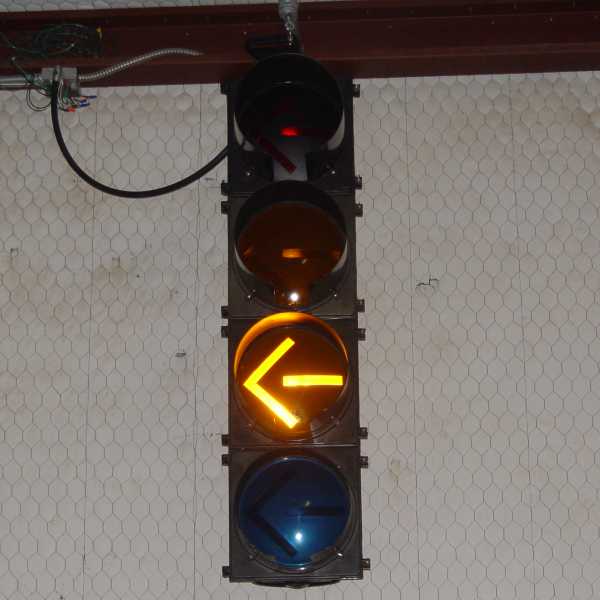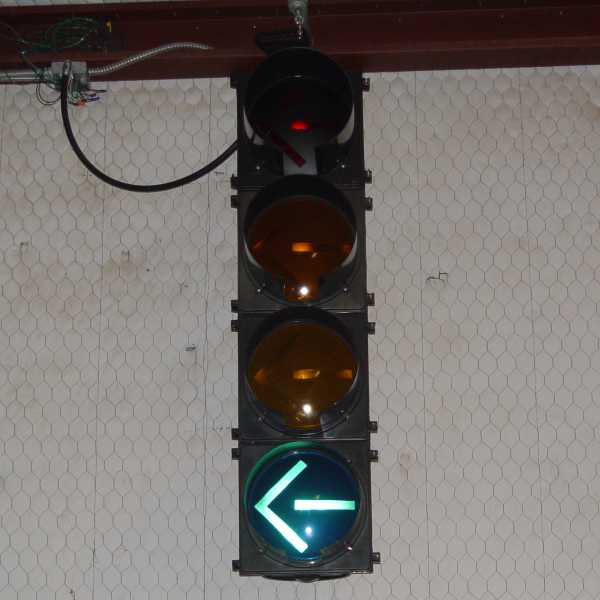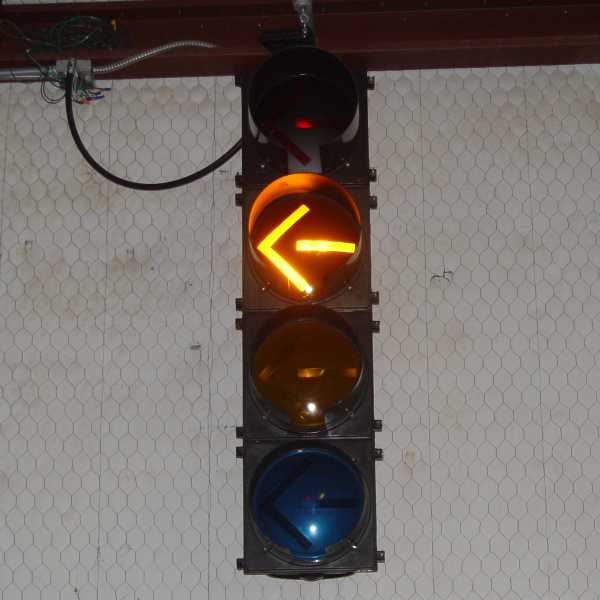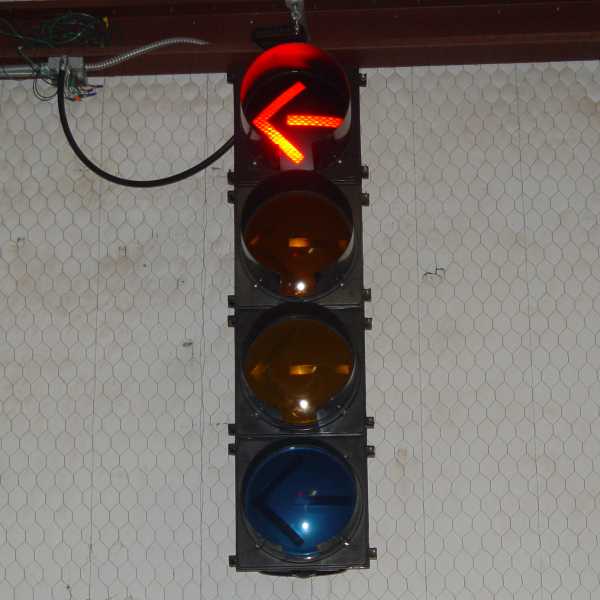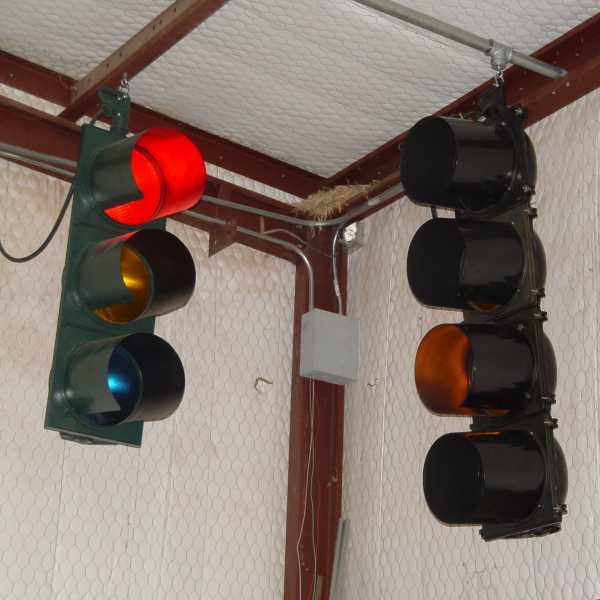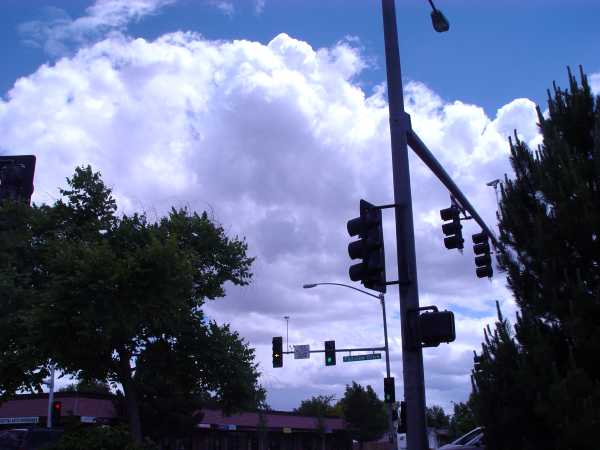Modern traffic actuated traffic signal controllers that can respond as needed to traffic demands have in many instances improved traffic movement through busy intersections. However at some intersections where left turns are controlled by doghouse signals and "permissive interval" controllers, an unexpected danger has emerged. This danger is called the "Yellow Trap."
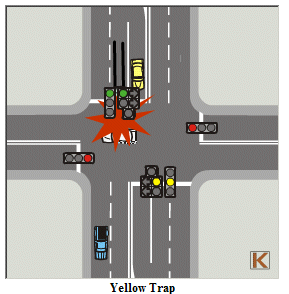
(Snapshot from "Fixing the Yellow Trap.")
With doghouse signals, after the protected left turn phase ends, traffic in the left turn pocket is given a green ball which allows them to continue to make left turns, subject to yielding to oncoming traffic - just the same as an intersections that don't have protected left turn signals. In typical intersections traffic that is moving in both directions will be simultaneously given yellow lights when the signal changes.
However if there is no cross street traffic, a "smart" controller might return to providing a protected left turn to one or both of the main left turn pockets. Here is where things can get tricky.
You are left turn pocket and your signal is displaying a green ball, as are the signals facing the through lanes adjacent to you. You are out in the intersection waiting for a break in oncoming traffic so you can complete your left turn. The signal controller senses that vehicles are stacking up in the left turn pocket directly across from you so it terminates all the traffic moving in your direction of travel in order to let those opposing vehicles make a protected left turn.
Your signal and the adjacent through signals turn yellow, then red. At that point you could find yourself stranded in the middle of the intersection. Or you could assume that the signals for oncoming traffic also turned yellow, then red (so you expect oncoming cars to also be stopping) and you get T-boned trying to complete your left turn. Neither outcome is desirable.
(For a complete discussion and animation of the Yellow Trap, please visit
Fixing the Yellow Trap.)
One solution is to put louvers on doghouse signals so that they could remain green if corresponding through traffic was stopped to permit oncoming protected left turns. The light for the left turn pocket won't turn red unless oncoming traffic is also stopping. However it is a little weird to see left turn signals displaying green balls while through signals are red. The louvers are supposed to prevent through traffic from seeing the green balls displayed by the left turn signals, however some jurisdictions have concerns if the left turn signals get out of alignment and can be seen by through traffic.
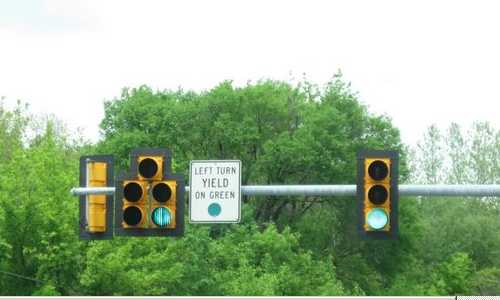
(Photo credit- I.C. Ligget)
Another solution uses in-line four section heads that have one red, one green and two yellow arrows. During the time that the left turn is protected the green arrow is displayed. If vehicles can turn left subject to yielding to oncoming traffic, the lower yellow arrow flashes. The upper yellow arrow comes on steady for three seconds at the end of the phase (when oncoming traffic is also stopping.) The red arrow, of course, signifies "STOP."
I've built a replica Yellow Trap signal using 12 inch LFE polycarbonate heads to illustrate how this system works.
|
